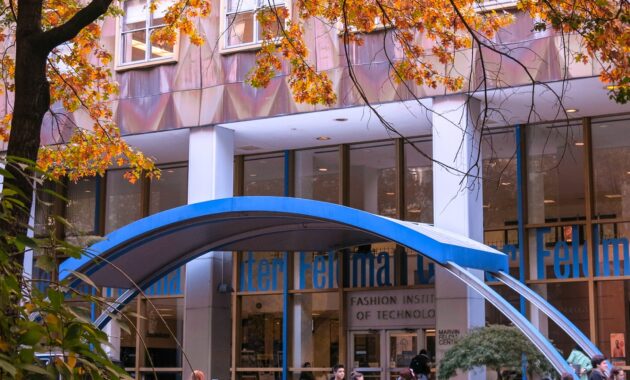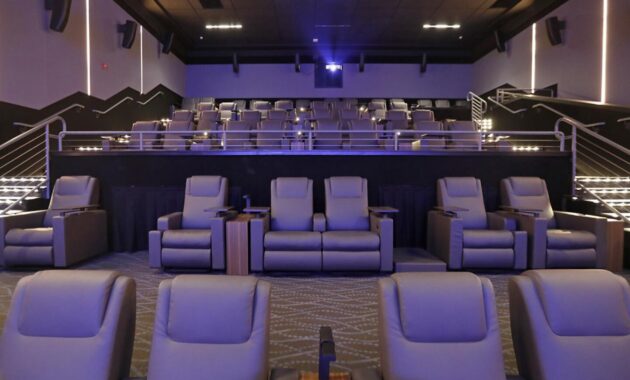A Fashionable Journey Through Time
Step back in time and immerse yourself in the captivating world of 19th-century fashion. The 1800s were a time of elegance, sophistication, and intricate styles that have continued to inspire designers and fashionistas alike to this day. From the Regency era to the Victorian age, each decade brought its own unique trends and silhouettes that defined the fashion of the time.

Image Source: alamy.com
In the early 19th century, the Regency era was marked by the influence of Jane Austen’s novels and the romanticism of the time. Women’s fashion embraced a more natural silhouette, with high waistlines, empire waist dresses, and delicate fabrics such as muslin and silk. The iconic Regency gown featured a high neckline, short sleeves, and a flowing skirt that highlighted the graceful movements of the wearer. Accessories such as gloves, bonnets, and shawls completed the refined look of the era.
As the century progressed, the Victorian era brought a shift in fashion with its emphasis on modesty, opulence, and strict social norms. The hourglass silhouette became popular, with women cinching their waists with corsets to achieve the desired shape. The voluminous skirts of the crinoline era gave way to the sleeker bustle silhouette, which accentuated the curves of the body. Rich fabrics like velvet, lace, and satin were favored, embellished with intricate details such as ruffles, pleats, and embroidery.
Men’s fashion in the 19th century was also a sight to behold, with dapper gentlemen sporting tailcoats, waistcoats, and top hats. The Regency era saw the rise of the dandy, who embraced bold colors, patterns, and accessories to make a fashion statement. As the century progressed, men’s fashion became more subdued and tailored, with dark suits, crisp shirts, and polished leather shoes becoming the norm for the Victorian gentleman.
The 19th century was not just about day-to-day fashion – it was also a time of elaborate eveningwear and formal attire. Ball gowns and evening dresses were made of luxurious fabrics like silk, satin, and tulle, adorned with lace, ribbons, and beading for a truly glamorous look. Men donned tuxedos and tailcoats for formal events, accessorized with pocket watches, cufflinks, and monocles to complete their ensemble.
Fashion in the 19th century was not just about clothing – it was a reflection of society, culture, and art. The intricate designs, luxurious fabrics, and attention to detail showcased the wealth and status of the wearer, while also serving as a form of self-expression and creativity. From the delicate embroidery of a Regency gown to the structured silhouette of a Victorian bustle dress, each garment told a story of its own.
As we look back on the chic trends of the 19th century, we can’t help but be inspired by the timeless elegance and sophistication of the era. Whether it’s the romanticism of the Regency era or the opulence of the Victorian age, there is something truly magical about stepping back in time and exploring the fashion of a bygone era. So why not take a fashionable journey through time and unveil the chic trends of 19th-century fashion for yourself?
Unveiling the Elegance of 19th Century Fashion
Step back in time with us as we explore the elegant and sophisticated trends of 19th-century fashion. The 1800s were a time of great change and innovation in the world of fashion, with styles evolving from the Regency era to the Victorian era. From delicate fabrics to intricate embellishments, the fashion of this time period was truly a sight to behold.
One of the defining features of 19th-century fashion was the emphasis on elegance and femininity. Women’s clothing became more structured and form-fitting, with corsets and bustles creating the coveted hourglass silhouette. Delicate fabrics such as silk, satin, and lace were used to create elaborate gowns and intricate details like ruffles, bows, and embroidery were added to enhance the overall look.
During the early 1800s, the Empire silhouette was popularized by the fashion icon Empress Josephine, wife of Napoleon Bonaparte. This style featured high waists, flowing skirts, and delicate drapery, giving women a light and ethereal look. As the century progressed, the silhouette evolved into the Romantic and Victorian styles, with fuller skirts, tighter bodices, and more structured shapes becoming the norm.
Accessories also played a crucial role in 19th-century fashion, with gloves, fans, parasols, and bonnets all essential items for a well-dressed lady. Jewelry was also a key component of women’s attire, with pearls, cameos, and precious gemstones adorning necklaces, earrings, and brooches. Men’s fashion was equally as elegant, with tailored suits, top hats, and cravats becoming the height of sophistication.
The colors and patterns of 19th-century fashion were also significant, with rich jewel tones like emerald green, sapphire blue, and ruby red being popular choices. Floral prints, paisleys, and intricate brocades were commonly used to add texture and depth to garments, while stripes, plaids, and polka dots added a playful touch to everyday attire.
Hairstyles were another important aspect of 19th-century fashion, with women’s hair often styled in elaborate updos, curls, and braids. Men’s hair was typically worn short and neatly groomed, with sideburns and mustaches being fashionable choices for the well-dressed gentleman.
As we delve deeper into the world of 19th-century fashion, we uncover a treasure trove of elegant and timeless styles that continue to inspire designers and fashionistas today. The attention to detail, craftsmanship, and artistry of this bygone era is truly a sight to behold, reminding us of a time when dressing up was a true art form.
So, take a step back in time with us and immerse yourself in the chic trends of the 19th century. From the delicate fabrics to the intricate embellishments, the elegance of this era is sure to captivate and inspire anyone with a love for fashion and history.
Exploring the Chic Trends of a Bygone Era
Step back in time and immerse yourself in the elegant world of 19th-century Fashion. The 1800s were a time of refinement and sophistication, where clothing was more than just a necessity—it was a statement of one’s social status and taste. From luxurious fabrics to intricate designs, the fashion of this era was truly a sight to behold.
One of the most iconic trends of the 19th century was the empire waist silhouette. This style, popularized during the Regency era, featured a high waistline that sat just below the bust, creating a long and flowing skirt that cascaded beautifully to the floor. The empire waist was not only flattering to a woman’s figure, but it also exuded a sense of grace and elegance that was highly sought after during this time.
Another trend that dominated 19th-century fashion was the use of rich, luxurious fabrics. Silk, satin, velvet, and lace were all popular choices for both men and women’s clothing, adding a touch of opulence to every Outfit. These fabrics were often embellished with intricate embroidery, beading, and lacework, further showcasing the skill and craftsmanship of the era’s artisans.
In terms of colors, pastel hues were all the rage in the 19th century. Soft shades of pink, blue, lavender, and mint were commonly seen in women’s dresses, while men often opted for more subdued tones like navy, grey, and black. These delicate colors added a sense of femininity and romance to the fashion of the time, creating a whimsical and ethereal aesthetic that is still admired today.
Accessories also played a crucial role in 19th-century fashion, with both men and women adorning themselves with intricate pieces that added the perfect finishing touch to their outfits. Women often wore delicate gloves, parasols, and bonnets, while men accessorized with top hats, pocket watches, and walking sticks. These accessories were not only practical but also served as a way to showcase one’s personal style and refinement.
Hairstyles were another important aspect of 19th-century fashion, with intricate updos and elaborate curls being the height of sophistication. Women often styled their hair in intricate braids, twists, and buns, adorned with ribbons, flowers, and ornamental combs. Men, on the other hand, wore their hair in neatly groomed styles, often with sideburns and facial hair to add a touch of masculinity to their look.
The fashion of the 19th century was a true reflection of the society and culture of the time. It was a time of elegance, refinement, and sophistication, where clothing was more than just a practical necessity—it was a work of art. By exploring the chic trends of this bygone era, we can gain a deeper appreciation for the craftsmanship and artistry that went into creating the exquisite garments of the past. So why not take a step back in time and embrace the fashionable delights of the 1800s?
Stepping Back in Time: Fashionable Delights of 1800s
The 19th century was a time of elegance and sophistication in the world of fashion. From the Regency era to the Victorian era, there was a wide range of styles and trends that defined the fashion of the time. Let’s take a journey back in time and explore the fashionable delights of the 1800s.
One of the most iconic trends of the 19th century was the high-waisted Empire silhouette popularized during the Regency era. This style, characterized by its empire waistline and flowing skirts, was inspired by the classical fashion of ancient Greece and Rome. Women would wear lightweight fabrics such as muslin and silk in soft pastel colors, creating a look that was both elegant and romantic.
As we move into the mid-19th century, the Victorian era brought about a new set of fashion trends that were characterized by their opulence and extravagance. The crinoline, a cage-like structure worn under skirts to create a bell shape, became a popular accessory for women during this time. Paired with elaborate bustle skirts and tight corsets, the Victorian woman’s silhouette was defined by its dramatic curves and intricate layers of fabric.
Men’s fashion in the 1800s was equally as stylish and sophisticated. The Regency era saw the rise of the dandy, a fashionable and well-dressed man who paid careful attention to his appearance. Dandies were known for their tailored suits, top hats, and cravats, which added a touch of elegance to their overall look.
As we move into the Victorian era, men’s fashion became more formal and structured. The morning coat, a fitted tailcoat worn during the daytime, became a staple in every gentleman’s wardrobe. Paired with waistcoats, trousers, and polished leather shoes, Victorian men exuded a sense of refinement and polish in their attire.
Accessories also played a significant role in 19th-century fashion. Women adorned themselves with gloves, fans, and parasols, while men accessorized with pocket watches, walking sticks, and monocles. These accessories not only added a touch of flair to an Outfit but also reflected the social status and lifestyle of the wearer.
Hairstyles in the 1800s were also a key element of fashion. Women styled their hair in intricate updos and braids, often adorned with ribbons, flowers, and combs. Men sported clean-shaven faces and well-groomed sideburns, adding to their polished and refined appearance.
Overall, the fashion of the 1800s was a true reflection of the societal norms and values of the time. It was a time of elegance, sophistication, and attention to detail, where style was a way of expressing one’s social status and identity. Stepping back in time and exploring the fashionable delights of the 1800s allows us to appreciate the beauty and artistry of a bygone era.
19th century fashion


